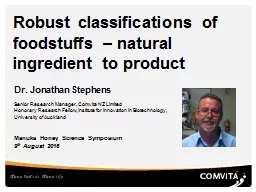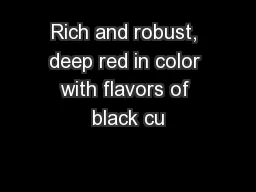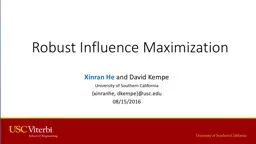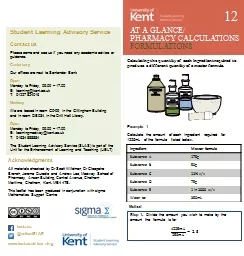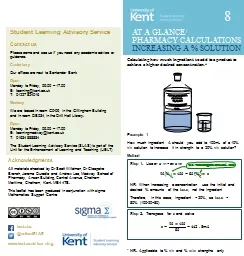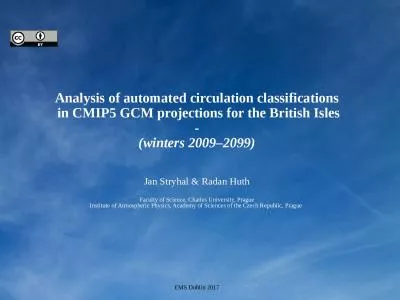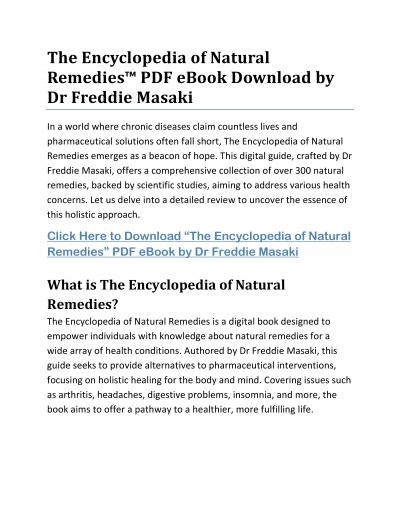PPT-Robust classifications of foodstuffs – natural ingredient
Author : cheryl-pisano | Published Date : 2017-06-02
Dr Jonathan Stephens Senior Research Manager Comvita NZ Limited Honorary Research Fellow Institute for Innovation in Biotechnology University of Auckland Manuka
Presentation Embed Code
Download Presentation
Download Presentation The PPT/PDF document "Robust classifications of foodstuffs –..." is the property of its rightful owner. Permission is granted to download and print the materials on this website for personal, non-commercial use only, and to display it on your personal computer provided you do not modify the materials and that you retain all copyright notices contained in the materials. By downloading content from our website, you accept the terms of this agreement.
Robust classifications of foodstuffs – natural ingredient: Transcript
Download Rules Of Document
"Robust classifications of foodstuffs – natural ingredient"The content belongs to its owner. You may download and print it for personal use, without modification, and keep all copyright notices. By downloading, you agree to these terms.
Related Documents

